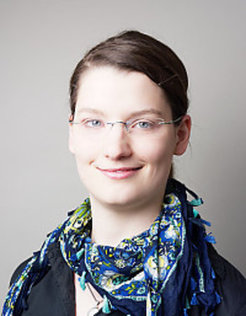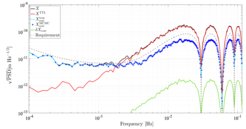Dr. Sarah Paczkowski
Postdoc in the “Space Interferometry” group

What is your current position at our institute?
I am a postdoc in the Space Interferometry group. Moreover, I am part of the AEI LISA performance and operations team, as well as of the European efforts to develop the LISA ground segment and the LISA Consortium.
Can you please describe your research?
My research contributes to the Laser Interferometer Space Antenna (LISA) mission. More specifically, I currently work on how to mitigate a specific disturbance of the laser measurements, called tilt-to-length noise, in the data processing. If you want to know more about tilt-to-length noise, please check out this short and hopefully easy to read article in the LIGO magazine.
Do you have a favorite figure from a publication you co-authored?

Simply put, this figure shows that on simulated data, we can indeed mitigate the effect of tilt-to-length (TTL) noise with our current strategy. In more detail: The black trace shows the 'original data' and the red trace the TTL coupling which we want to mitigate. In the simulation, you know the parameters of the TTL noise. If you use these for the mitigation, you obtain the cyan curve. Its level is determined by the other measurement disturbances. When LISA flies, we won't know the parameters of the TTL noise and so have to estimate them. When we do this with our approach of noise minimisation and then use these estimated coefficients for the mitigation, we obtain the curve indicated by the blue crosses. You can see that it is on top of the cyan curve, so the estimation works. The difference between these two ways of mitigation is shown in green.

